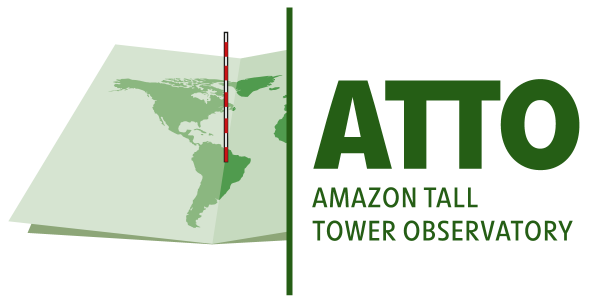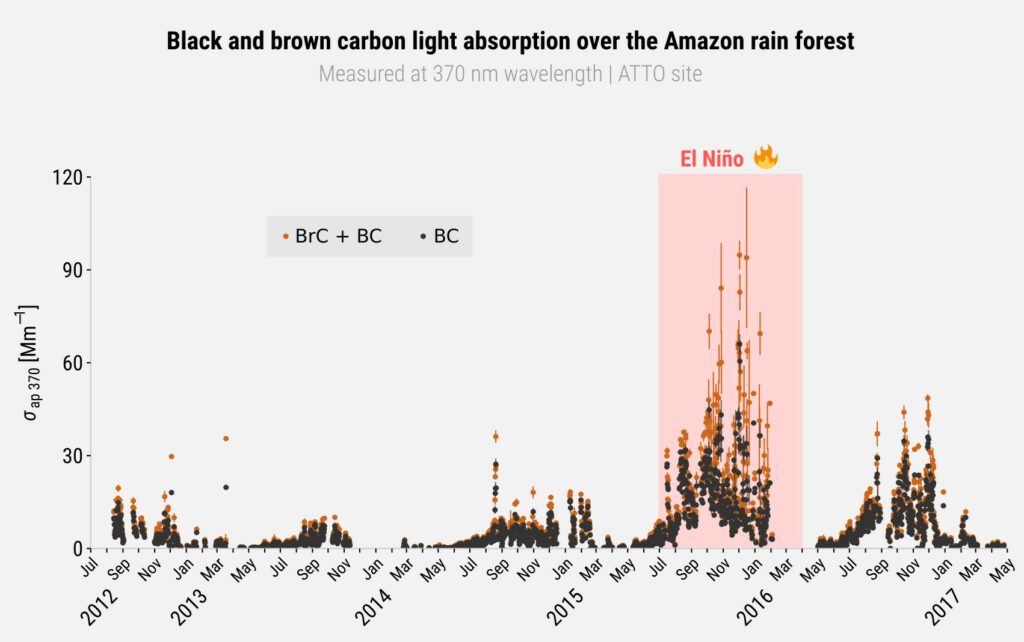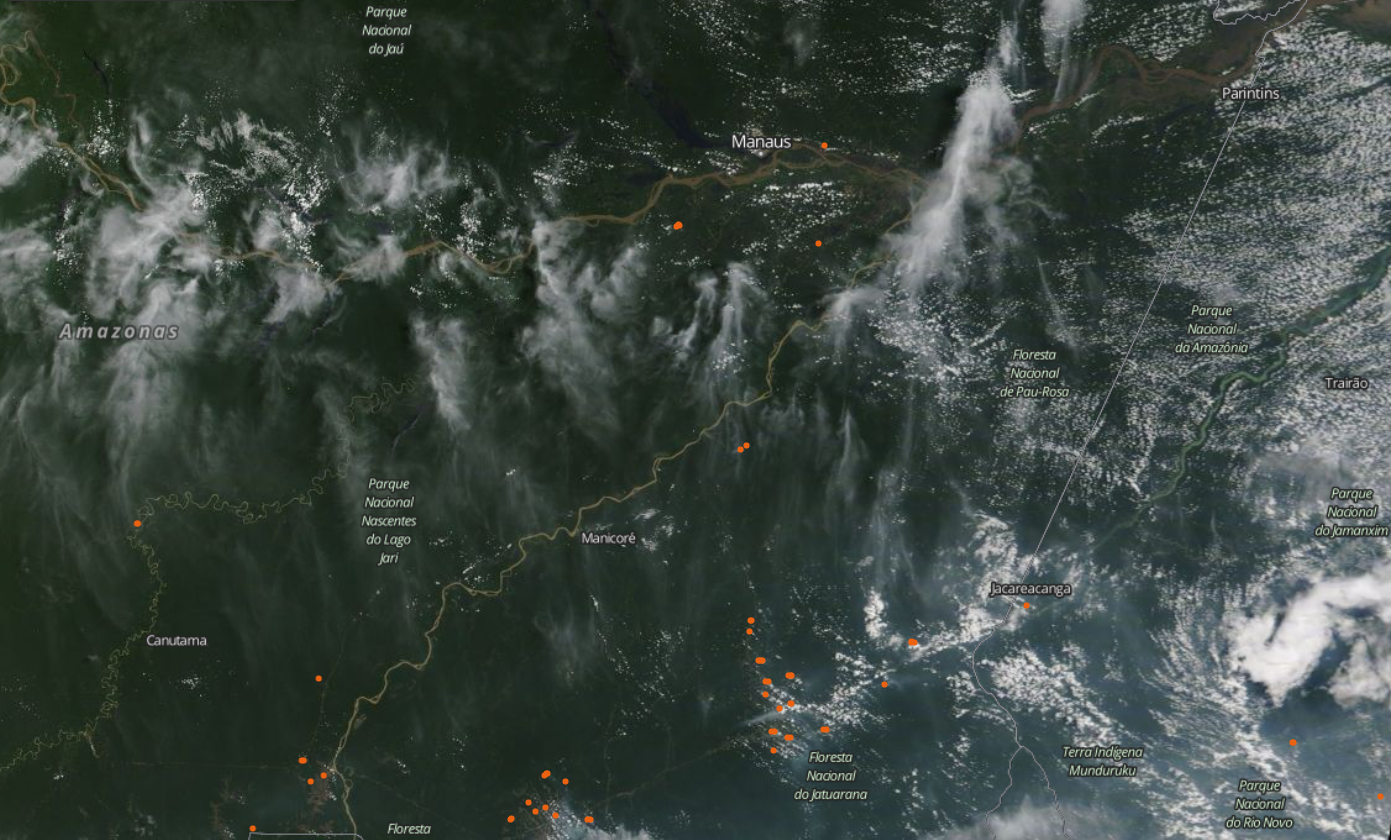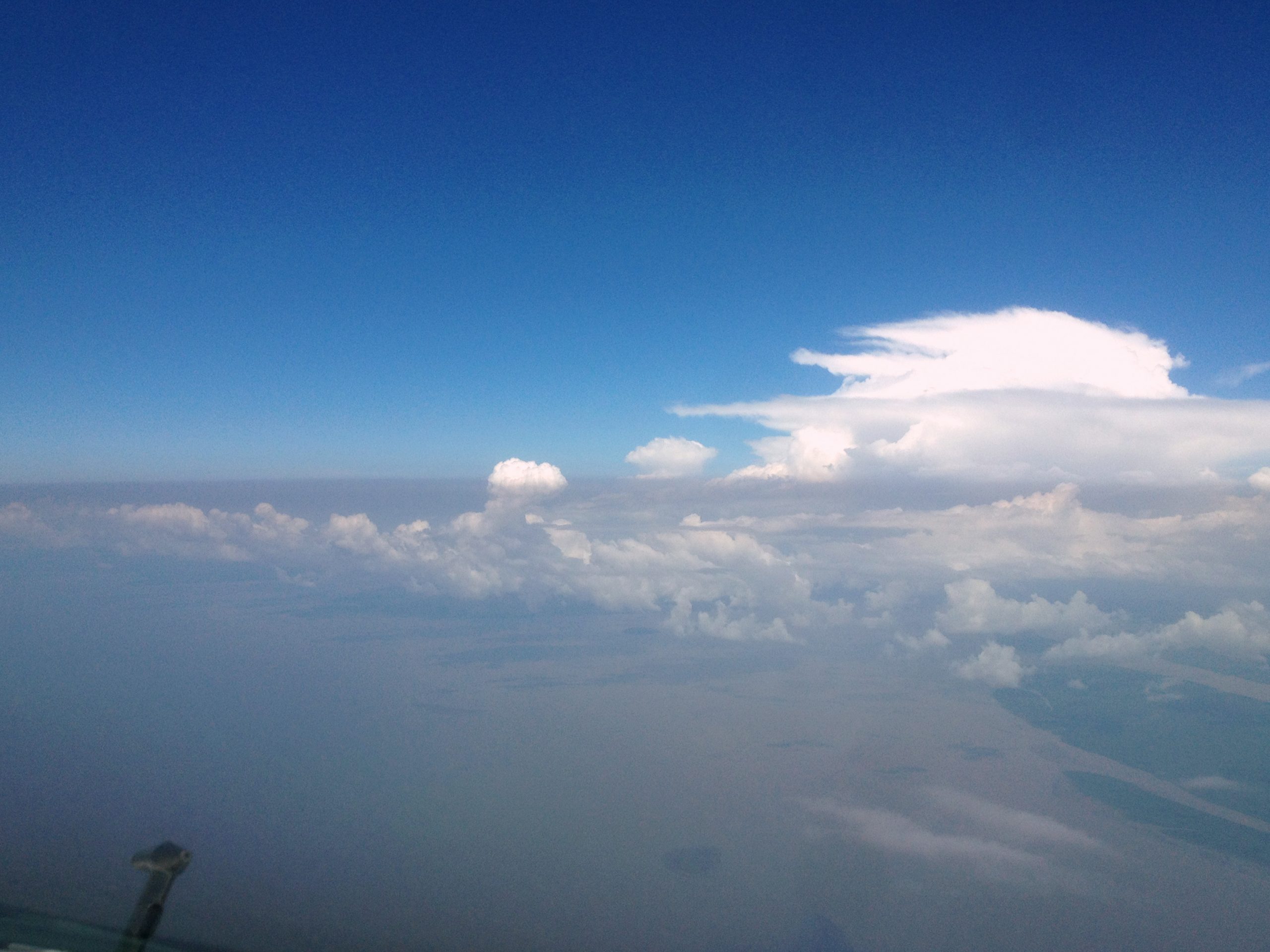We are currently in the middle of the dry season in the central Amazon basin, where ATTO is located. This time of year is always characterized by lots of biomass burnings, both natural and anthropogenic. Fires produce aerosols, such as black and brown carbon. But the situation isn’t the same every year.
First-author Jorge Saturno just published the study in Atmospheric Chemistry and Physics (ACP) Issue 18. It is available Open Access and thus freely available for everyone.
Similar articles
Soot and other aerosols from biomass burning can influence regional and global weather and climate. Lixia Liu and her colleagues studied how this affects the Amazon Basin during the dry season. While there are many different interactions between biomass burning aerosols and climate, they found that they overall lead to fewer and weaker rain events in the Amazon rainforest.
When forests burn those fires produce a lot of smoke. And that smoke usually contains soot, also called “black carbon”. Black carbon particles are aerosols that absorb radiation and as such can warm the Earth’s atmosphere and climate. But we still have much to learn about aerosols, their properties, and distribution in the atmosphere. One of those things is the question of how black carbon emitted from biomass burning in Africa (i.e. forests, grasslands, savannas etc.) is transported across the Atlantic and into the Amazon basin, and what role it plays there. Bruna Holanda and her co-authors tackled this in their new study published in ACP.
More soot particles enter the central Amazon rainforest from brush fires in Africa than from regional fires at certain times.
Soot and other aerosols from biomass burning can influence regional and global weather and climate. Lixia Liu and her colleagues studied how this affects the Amazon Basin during the dry season. While there are many different interactions between biomass burning aerosols and climate, they found that they overall lead to fewer and weaker rain events in the Amazon rainforest.
When forests burn those fires produce a lot of smoke. And that smoke usually contains soot, also called “black carbon”. Black carbon particles are aerosols that absorb radiation and as such can warm the Earth’s atmosphere and climate. But we still have much to learn about aerosols, their properties, and distribution in the atmosphere. One of those things is the question of how black carbon emitted from biomass burning in Africa (i.e. forests, grasslands, savannas etc.) is transported across the Atlantic and into the Amazon basin, and what role it plays there. Bruna Holanda and her co-authors tackled this in their new study published in ACP.
More soot particles enter the central Amazon rainforest from brush fires in Africa than from regional fires at certain times.
Soot and other aerosols from biomass burning can influence regional and global weather and climate. Lixia Liu and her colleagues studied how this affects the Amazon Basin during the dry season. While there are many different interactions between biomass burning aerosols and climate, they found that they overall lead to fewer and weaker rain events in the Amazon rainforest.
When forests burn those fires produce a lot of smoke. And that smoke usually contains soot, also called “black carbon”. Black carbon particles are aerosols that absorb radiation and as such can warm the Earth’s atmosphere and climate. But we still have much to learn about aerosols, their properties, and distribution in the atmosphere. One of those things is the question of how black carbon emitted from biomass burning in Africa (i.e. forests, grasslands, savannas etc.) is transported across the Atlantic and into the Amazon basin, and what role it plays there. Bruna Holanda and her co-authors tackled this in their new study published in ACP.





